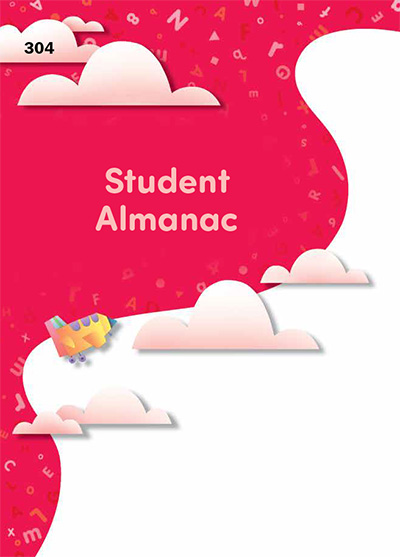Page 304 from

Start-Up Activity
The “Student Almanac” on pages 304–345 is a cross-curricular source of information that your students will learn to love. It includes fun facts about using language, interesting graphics that explore science, valuable tips for improving math skills, clear guidelines for reading maps, and a helpful time line of historical facts. Review this information with your students as needed. Have each student page through the almanac, and ask volunteers to share interesting things they discover.
Think About It
“The pursuit of knowledge is never-ending. The day you stop seeking knowledge is the day you stop growing.”
—Brandon Travis Ciaccio

Start-Up Activity
The “Student Almanac” on pages 304–345 is a cross-curricular source of information that your students will learn to love. It includes fun facts about using language, interesting graphics that explore science, valuable tips for improving math skills, clear guidelines for reading maps, and a helpful time line of historical facts. Review this information with your students as needed. Have each student page through the almanac, and ask volunteers to share interesting things they discover.
Think About It
“The pursuit of knowledge is never-ending. The day you stop seeking knowledge is the day you stop growing.”
—Brandon Travis Ciaccio